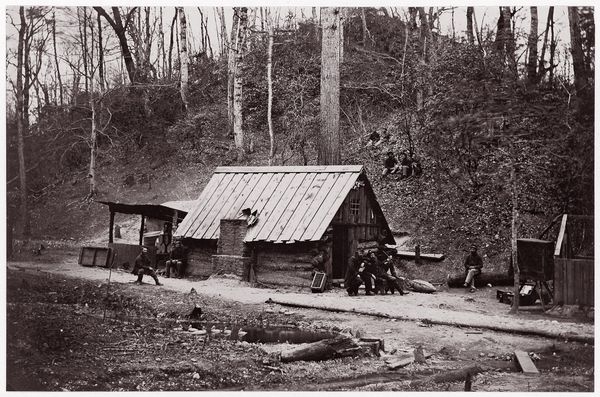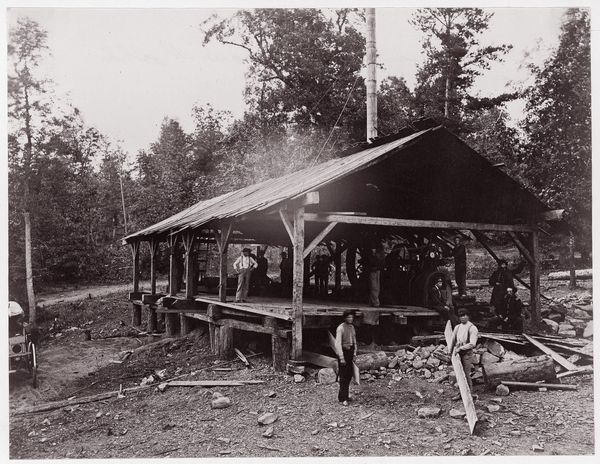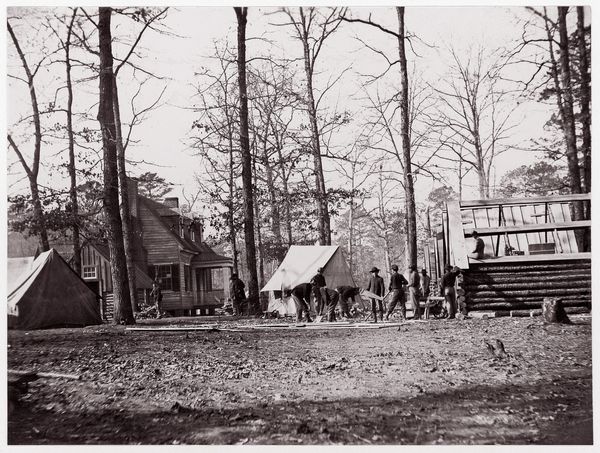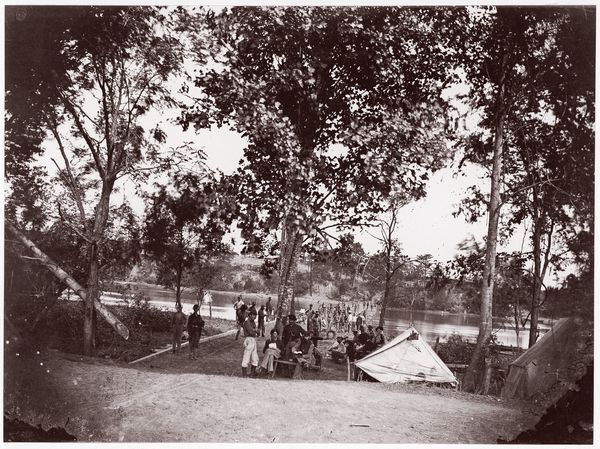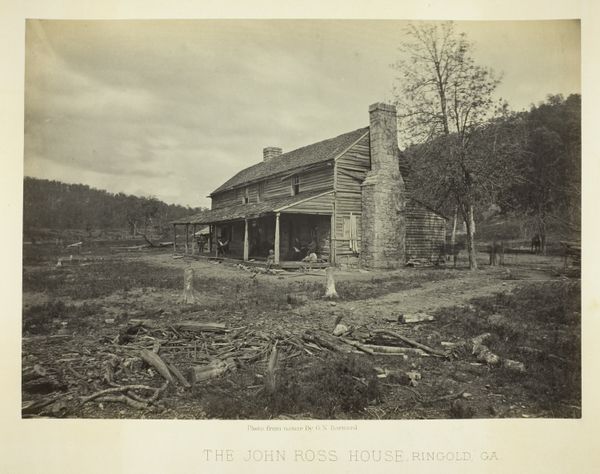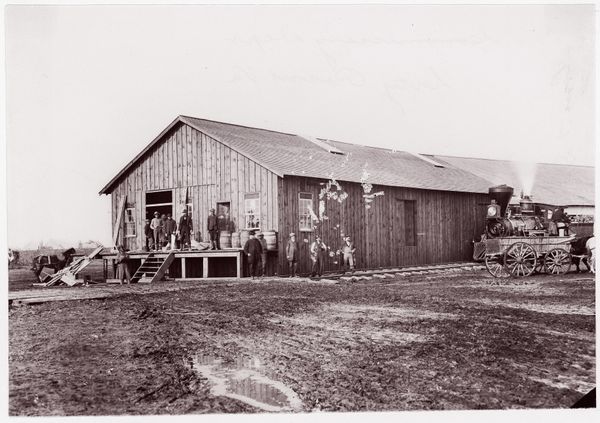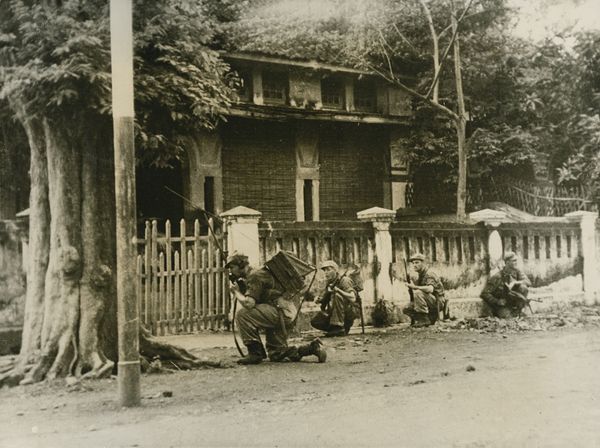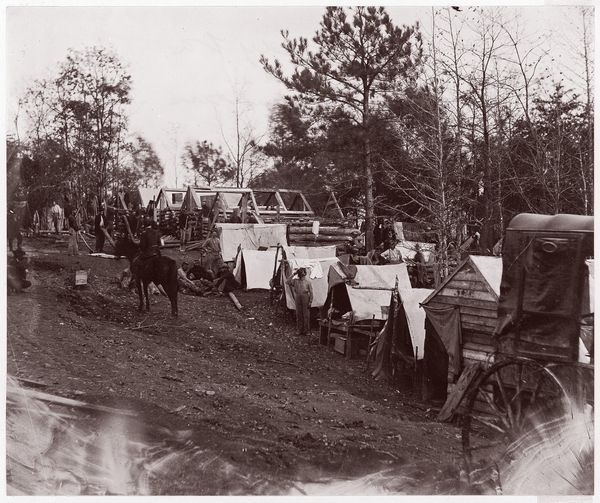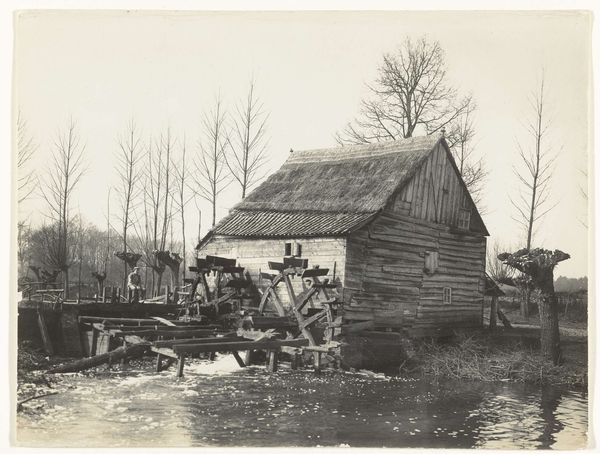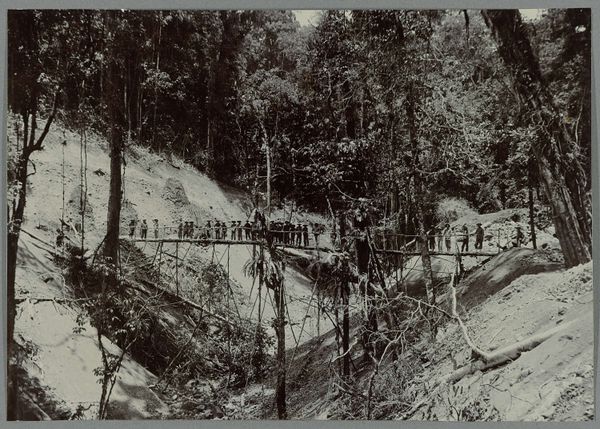![[A Union Station on the James River Established for Extracting Gunpowder from Confederate Torpedoes] by Egbert Guy Fowx](/_next/image?url=https%3A%2F%2Fd2w8kbdekdi1gv.cloudfront.net%2FeyJidWNrZXQiOiAiYXJ0ZXJhLWltYWdlcy1idWNrZXQiLCAia2V5IjogImFydHdvcmtzL2U1ZDFjM2M4LWQ2ZGMtNDY2MS04NmNhLTU0NjhhYmFmMTcwZi9lNWQxYzNjOC1kNmRjLTQ2NjEtODZjYS01NDY4YWJhZjE3MGZfZnVsbC5qcGciLCAiZWRpdHMiOiB7InJlc2l6ZSI6IHsid2lkdGgiOiAxOTIwLCAiaGVpZ2h0IjogMTkyMCwgImZpdCI6ICJpbnNpZGUifX19&w=3840&q=75)
[A Union Station on the James River Established for Extracting Gunpowder from Confederate Torpedoes] 1864
0:00
0:00
photography, gelatin-silver-print
#
black and white photography
#
war
#
landscape
#
outdoor photograph
#
photography
#
gelatin-silver-print
#
men
Dimensions: Image: 13.3 x 20.6 cm (5 1/4 x 8 1/8 in.)
Copyright: Public Domain
Curator: This is a gelatin-silver print created in 1864 by Egbert Guy Fowx, currently held in the Metropolitan Museum of Art. It’s titled "[A Union Station on the James River Established for Extracting Gunpowder from Confederate Torpedoes]." Editor: The image exudes a peculiar serenity, doesn't it? Despite the grim implications of the subject matter, there's a pastoral calm. I'm drawn to the interplay of light and shadow, almost theatrical in quality. Curator: Absolutely. The strategic use of light emphasizes the contrast between the mundane – men sitting, barrels neatly stacked – and the clandestine, dangerous work underway. The setting, nestled within nature, feels deceptive. Editor: It feels so clandestine. Those huddled figures further up the slope seem like shadowy conspirators, absorbed in some forbidden rite. They blend in, part of the woods themselves. The men right here are extracting gunpowder? Curator: Precisely! Think of gunpowder: destruction and power, symbolized here not just through their work, but in this remote spot. The photograph hints at an alchemical transformation happening: potential ruin distilled from recovered ordnance. Editor: It is fascinating how even mundane, functional architecture takes on such emotional resonance within the context of war. The little shack is filled with symbolism and ominous intentions; its shadow creates depth but also mystery. The artist captures not just the physical place, but the psychology of that moment, an alchemy indeed, full of transformation! Curator: Alchemy—I love that, yes! Fowx has composed the image beautifully, the perspective leading the eye back, revealing the depth of this warren within a landscape. One has to wonder about what Fowx aimed to communicate to his contemporary audience through photography. What type of meaning or purpose did they prescribe the piece, knowing where this power came from? Editor: To our eyes, seeing how such sites are now viewed historically, there's an enduring cautionary tale of the ever-present shadows underlying moments of everyday existence, a poignant comment on conflict—a hidden, shadowy network and human cost just barely beneath the surface of something that, in some way, also appears incredibly bucolic. Curator: I find myself feeling unsettled but fascinated, the photograph an odd paradox, simultaneously beautiful and imbued with quiet menace. Fowx captured an enduring historical memory through his own eyes and experience.
Comments
No comments
Be the first to comment and join the conversation on the ultimate creative platform.
